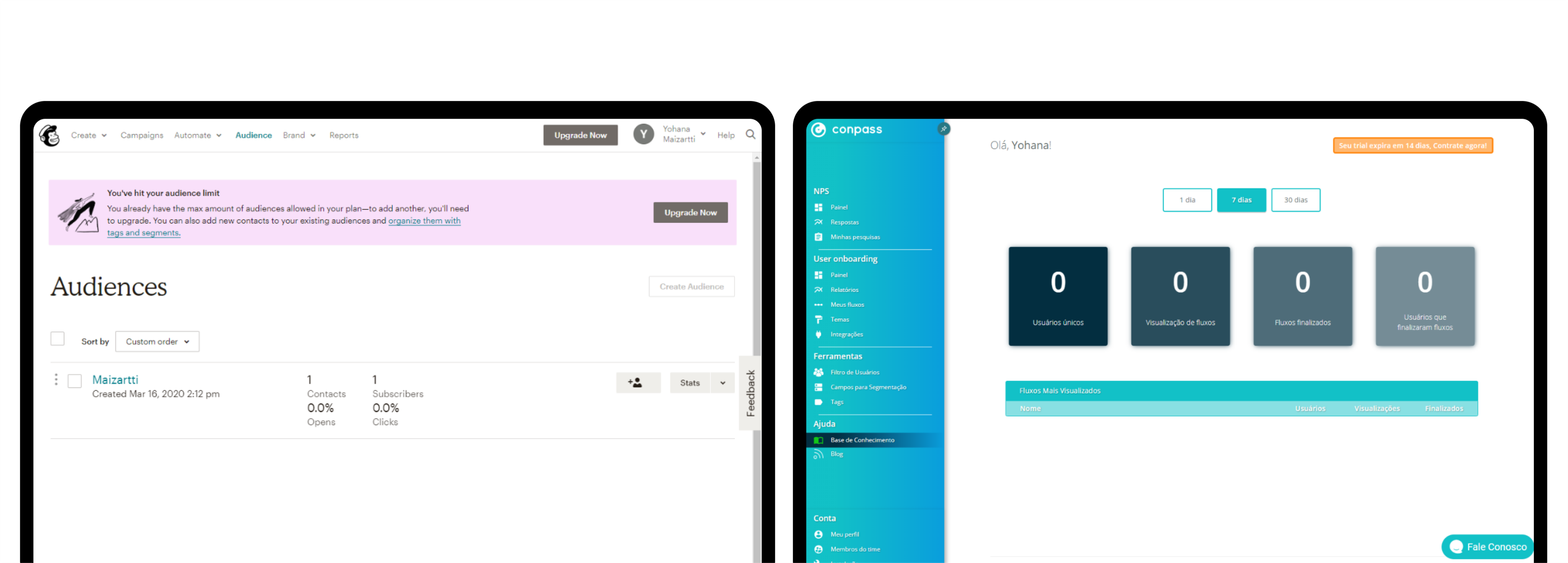Back
Contact me
Client
Casa Magalhães
Industry
Retail
Year
2019
Development of an MVP for an internal system to manage and distribute communication campaigns for Casa Magalhães' clients. The marketing team previously relied on external tools to communicate with users of the company's products, but this product was specifically designed to meet their needs.
Context
The marketing team at Casa Magalhães wanted to communicate with clients via their software, but found that the process was fragmented and inefficient, offering little control. The lack of a dedicated tool forced them to use external platforms such as email marketing, WhatsApp and spreadsheets, which caused all sorts of problems.
Problem
The marketing team relied on multiple external tools to create and send campaigns, resulting in:
- Low operational efficiency, with many manual steps and frequent rework.
- A lack of contextual segmentation, which made personalised campaigns impossible.
- Clients receiving communications outside the CM product environment.
- High dependence on other teams for simple tasks.
Our goal
Build the MVP of a centralized platform that allows the marketing team to:
- Create, segment, schedule and manage content aimed at users of CM's software.
- Eliminate the need for external tools to make the process smoother and more efficient.
- Enable detailed segmentation by system, functionality, location and more.
- Track and export campaign performance statistics.
Research
Through meetings with the marketing team, we identified the following issues:
- External tools did not meet specific segmentation needs and lacked integration with CM products.
- There was almost no visibility into campaign’s results, which complicated decision-making.
- The team wanted more autonomy to create and publish content without having to rely on technical support.
These insights were crucial in defining the scope of the MVP and prioritising features.
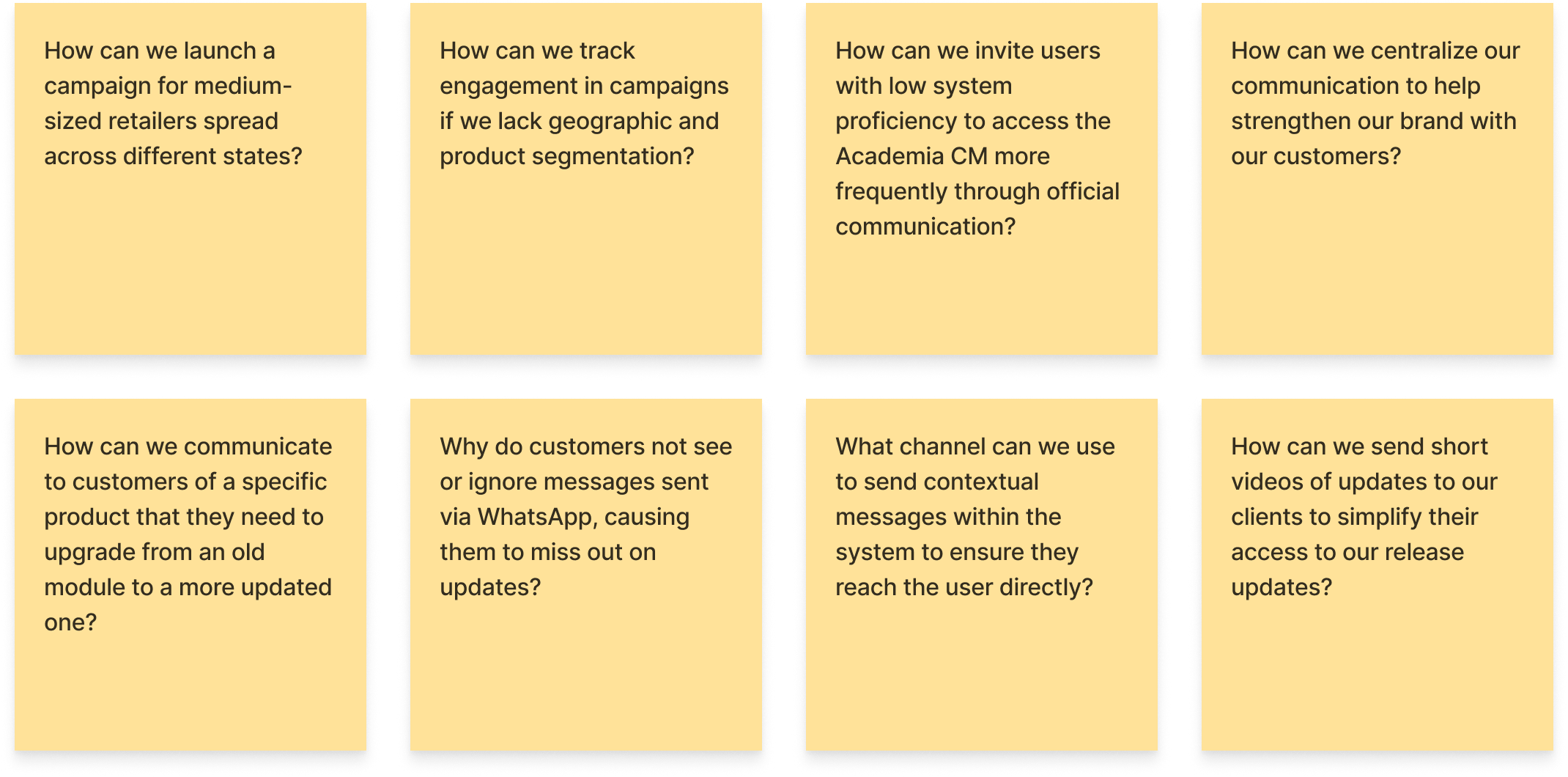
Benchmarking
In order to understand the best practices in content management, we conducted a benchmark analysis of tools such as Mailchimp, SendGrid and Conpass.
Ideation for MVP
The proposal was to build a basic version that would address the most urgent issues. Key strategic decisions included:
- Focus on essentials: Prioritising critical features for the MVP, such as a content editor, segmentation, scheduling and basic statistics.
- A simple and autonomous interface: An accessible design so that any marketing team member could use it without technical support.
- Robust segmentation: Filter by system, functionality, state, city and other specific client attributes.
- Complete control: Tools for viewing, editing, cancelling and prioritising campaigns are included.
- Automated notifications: Send alerts to the team at the end of each campaign's display period to enable continuous monitoring.
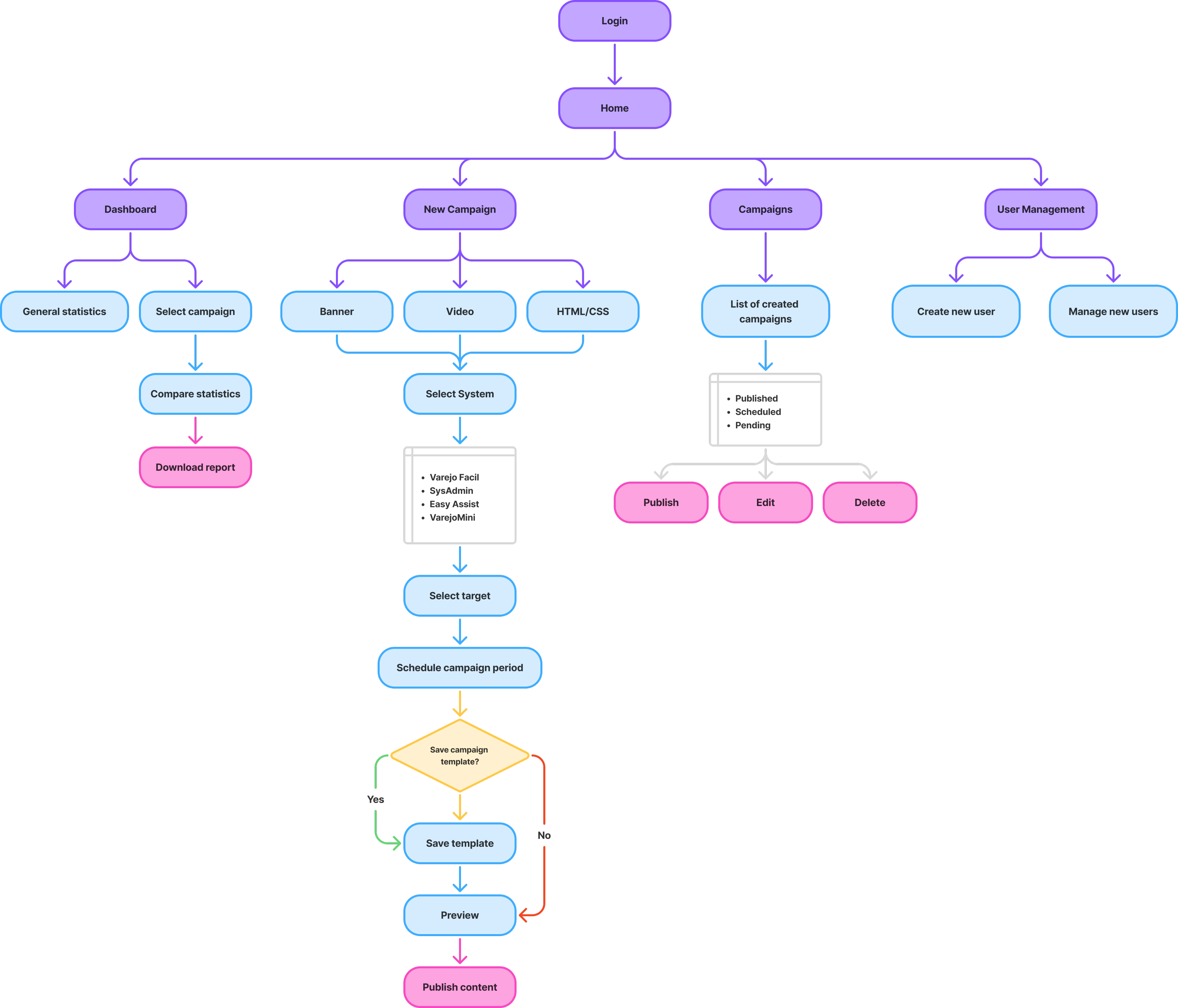
Solution
Each of these screens was designed to maximize efficiency, reduce reliance on external tools, and enhance the marketing team's analytical capabilities. In the designs, I prioritized clarity in controls, immediate visual feedback, and consistency with CM's visual identity, ensuring a smooth experience aligned with internal processes.
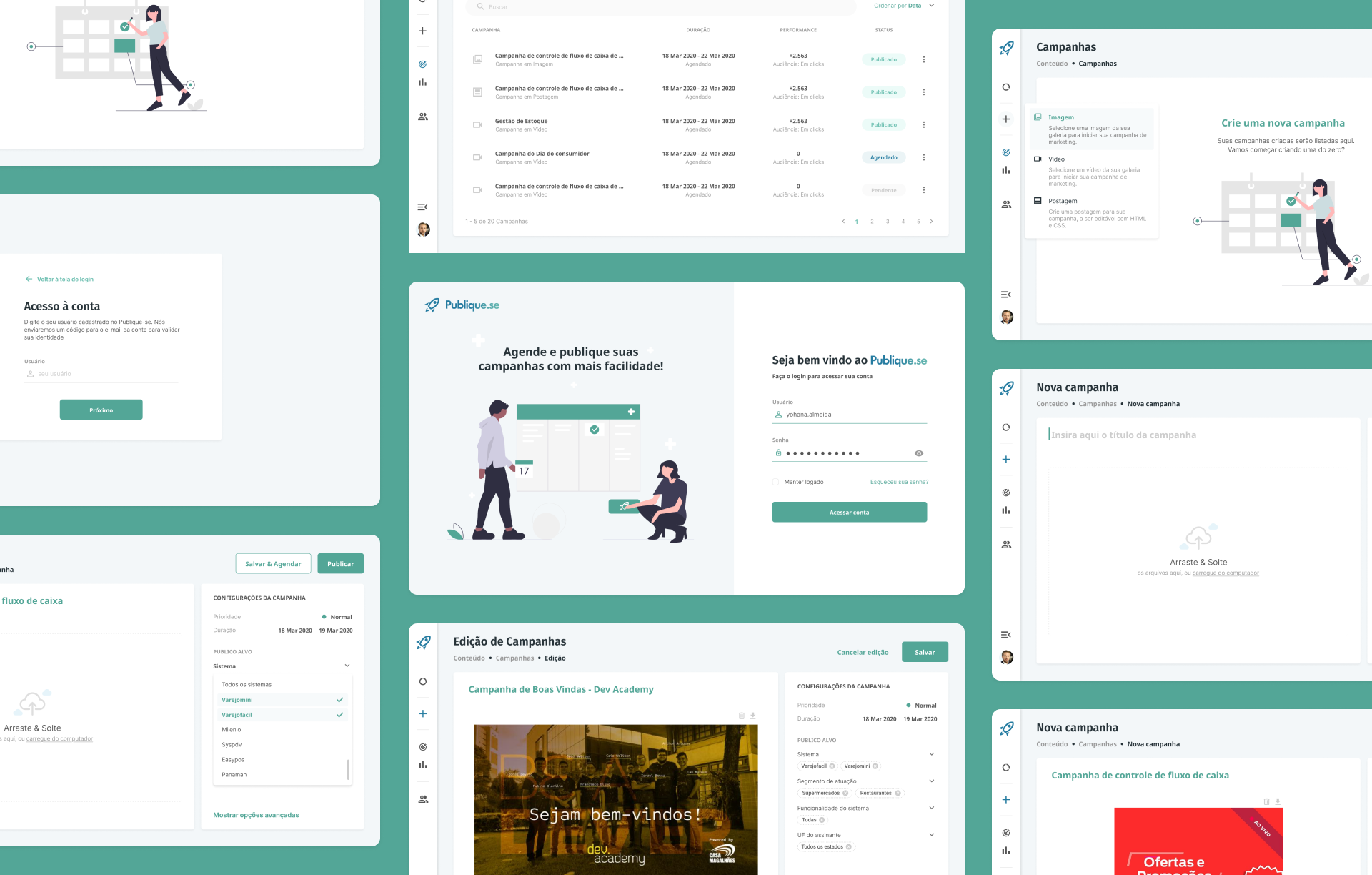
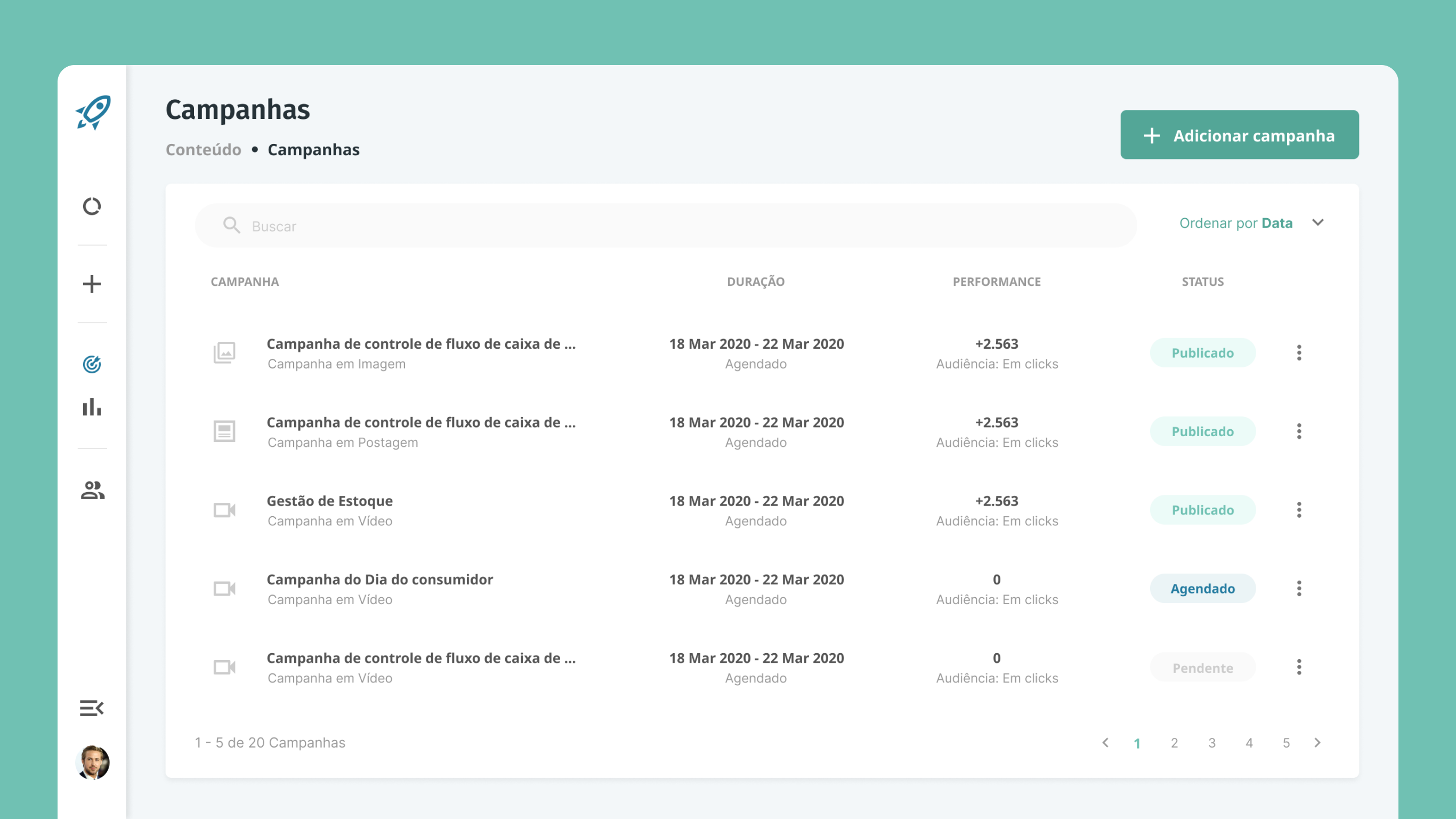
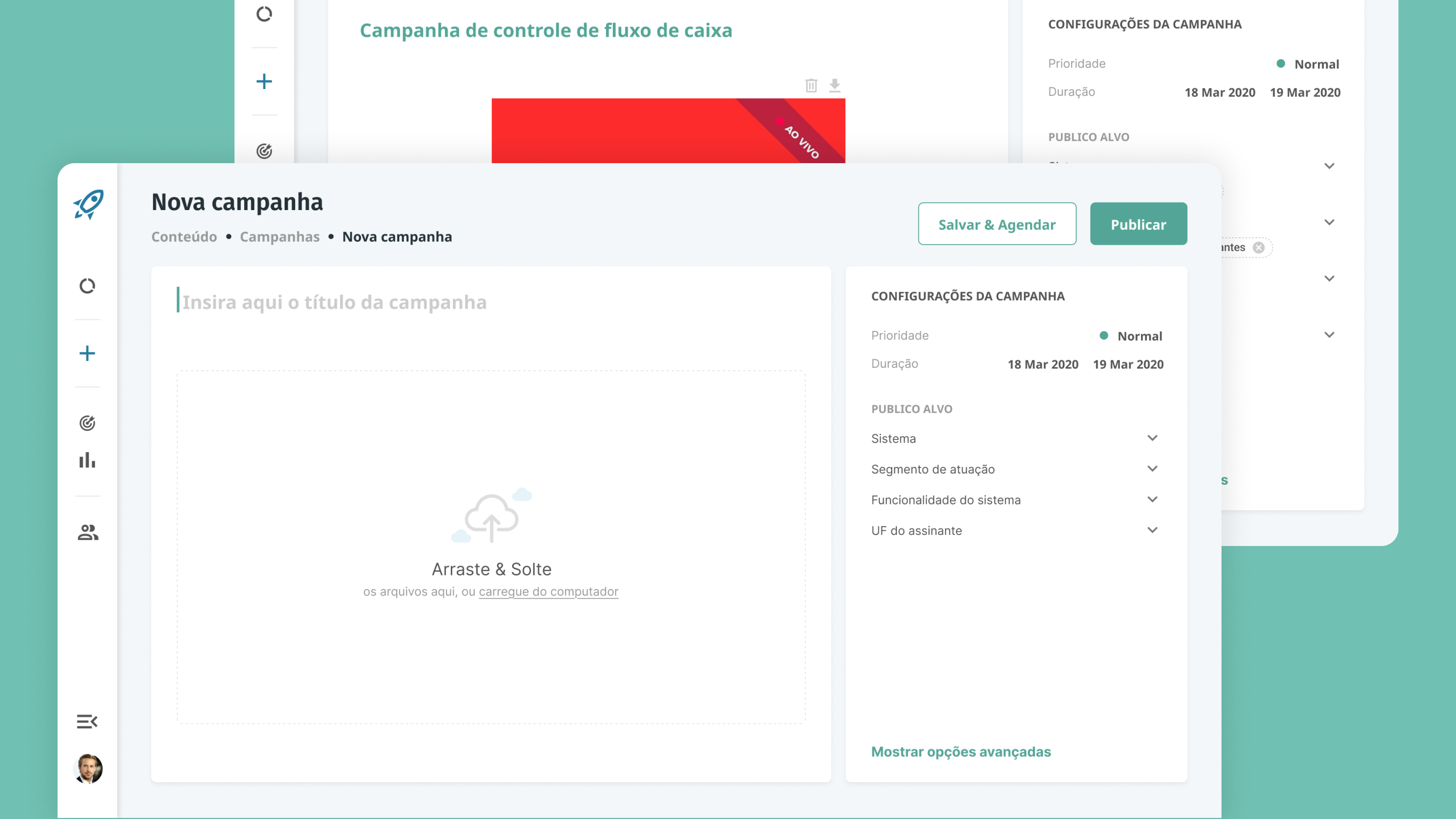

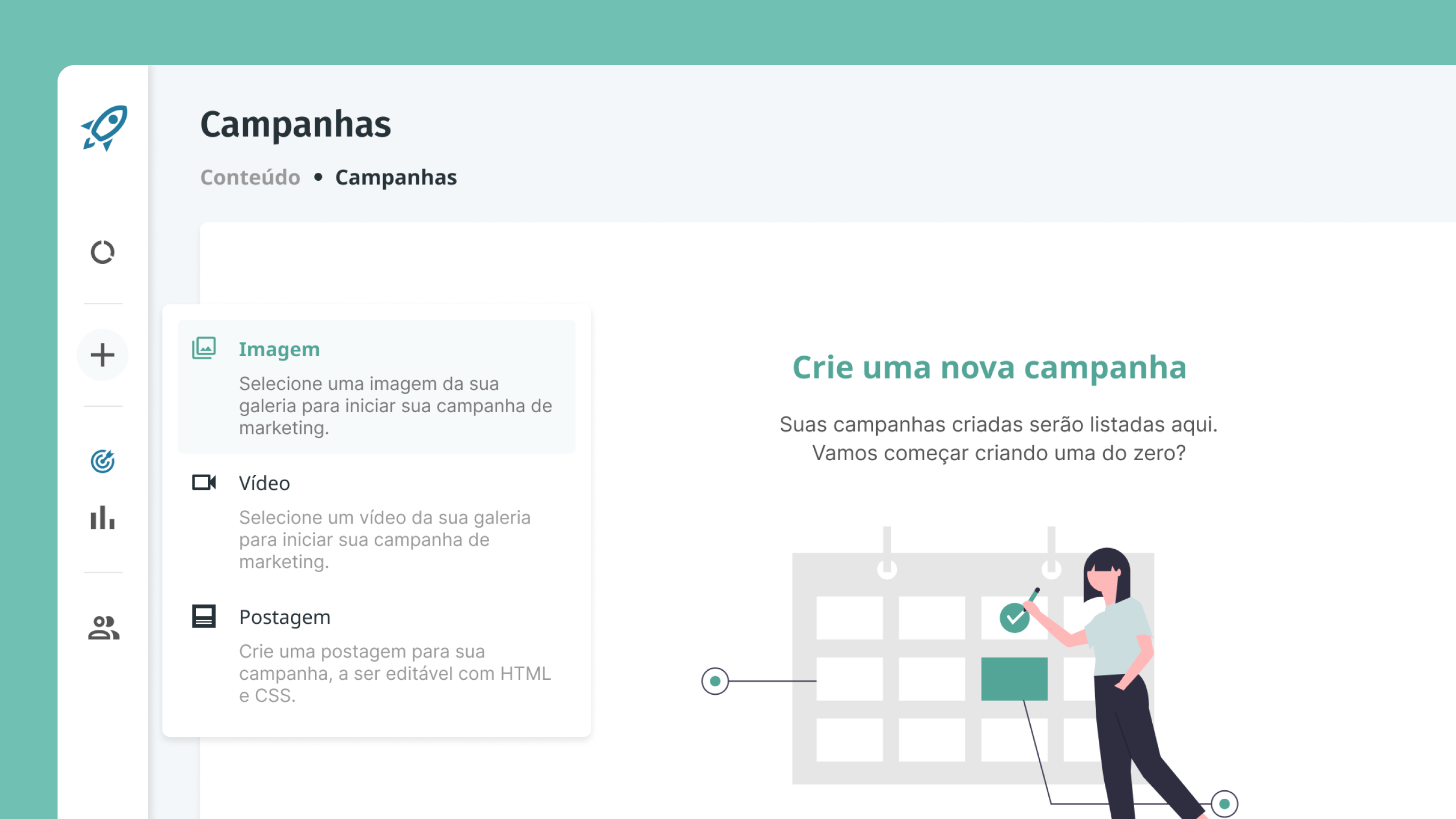
Takeaways
Each of these screens was designed to maximise the MVP efficiency, reduce reliance on external tools and improve the marketing team's analytical capabilities. When creating the designs, I prioritised clear controls, immediate visual feedback and consistency with CM's visual identity. This ensures a smooth experience that is aligned with internal processes.
After I had finished the design process, the project was put on hold, so I was unable to conduct any usability tests. A few years later, an internal team at CM scaled up and implemented the solution.
Back
Contact me
Client
Casa Magalhães
Industry
Retail
Year
2019
Development of an MVP for an internal system to manage and distribute communication campaigns for Casa Magalhães' clients. The marketing team previously relied on external tools to communicate with users of the company's products, but this product was specifically designed to meet their needs.
Context
The marketing team at Casa Magalhães wanted to communicate with clients via their software, but found that the process was fragmented and inefficient, offering little control. The lack of a dedicated tool forced them to use external platforms such as email marketing, WhatsApp and spreadsheets, which caused all sorts of problems.
Problem
The marketing team relied on multiple external tools to create and send campaigns, resulting in:
- Low operational efficiency, with many manual steps and frequent rework.
- A lack of contextual segmentation, which made personalised campaigns impossible.
- Clients receiving communications outside the CM product environment.
- High dependence on other teams for simple tasks.
Our goal
Build the MVP of a centralized platform that allows the marketing team to:
- Create, segment, schedule and manage content aimed at users of CM's software.
- Eliminate the need for external tools to make the process smoother and more efficient.
- Enable detailed segmentation by system, functionality, location and more.
- Track and export campaign performance statistics.
Research
Through meetings with the marketing team, we identified the following issues:
- External tools did not meet specific segmentation needs and lacked integration with CM products.
- There was almost no visibility into campaign’s results, which complicated decision-making.
- The team wanted more autonomy to create and publish content without having to rely on technical support.
These insights were crucial in defining the scope of the MVP and prioritising features.

Benchmarking
In order to understand the best practices in content management, we conducted a benchmark analysis of tools such as Mailchimp, SendGrid and Conpass.
Ideation for MVP
The proposal was to build a basic version that would address the most urgent issues. Key strategic decisions included:
- Focus on essentials: Prioritising critical features for the MVP, such as a content editor, segmentation, scheduling and basic statistics.
- A simple and autonomous interface: An accessible design so that any marketing team member could use it without technical support.
- Robust segmentation: Filter by system, functionality, state, city and other specific client attributes.
- Complete control: Tools for viewing, editing, cancelling and prioritising campaigns are included.
- Automated notifications: Send alerts to the team at the end of each campaign's display period to enable continuous monitoring.

Solution
Each of these screens was designed to maximize efficiency, reduce reliance on external tools, and enhance the marketing team's analytical capabilities. In the designs, I prioritized clarity in controls, immediate visual feedback, and consistency with CM's visual identity, ensuring a smooth experience aligned with internal processes.





Takeaways
Each of these screens was designed to maximise the MVP efficiency, reduce reliance on external tools and improve the marketing team's analytical capabilities. When creating the designs, I prioritised clear controls, immediate visual feedback and consistency with CM's visual identity. This ensures a smooth experience that is aligned with internal processes.
After I had finished the design process, the project was put on hold, so I was unable to conduct any usability tests. A few years later, an internal team at CM scaled up and implemented the solution.
Back
Contact me
Client
Casa Magalhães
Industry
Retail
Year
2019
Development of an MVP for an internal system to manage and distribute communication campaigns for Casa Magalhães' clients. The marketing team previously relied on external tools to communicate with users of the company's products, but this product was specifically designed to meet their needs.
Context
The marketing team at Casa Magalhães wanted to communicate with clients via their software, but found that the process was fragmented and inefficient, offering little control. The lack of a dedicated tool forced them to use external platforms such as email marketing, WhatsApp and spreadsheets, which caused all sorts of problems.
Problem
The marketing team relied on multiple external tools to create and send campaigns, resulting in:
- Low operational efficiency, with many manual steps and frequent rework.
- A lack of contextual segmentation, which made personalised campaigns impossible.
- Clients receiving communications outside the CM product environment.
- High dependence on other teams for simple tasks.
Our goal
Build the MVP of a centralized platform that allows the marketing team to:
- Create, segment, schedule and manage content aimed at users of CM's software.
- Eliminate the need for external tools to make the process smoother and more efficient.
- Enable detailed segmentation by system, functionality, location and more.
- Track and export campaign performance statistics.
Research
Through meetings with the marketing team, we identified the following issues:
- External tools did not meet specific segmentation needs and lacked integration with CM products.
- There was almost no visibility into campaign’s results, which complicated decision-making.
- The team wanted more autonomy to create and publish content without having to rely on technical support.
These insights were crucial in defining the scope of the MVP and prioritising features.

Benchmarking
In order to understand the best practices in content management, we conducted a benchmark analysis of tools such as Mailchimp, SendGrid and Conpass.
Ideation for MVP
The proposal was to build a basic version that would address the most urgent issues. Key strategic decisions included:
- Focus on essentials: Prioritising critical features for the MVP, such as a content editor, segmentation, scheduling and basic statistics.
- A simple and autonomous interface: An accessible design so that any marketing team member could use it without technical support.
- Robust segmentation: Filter by system, functionality, state, city and other specific client attributes.
- Complete control: Tools for viewing, editing, cancelling and prioritising campaigns are included.
- Automated notifications: Send alerts to the team at the end of each campaign's display period to enable continuous monitoring.

Solution
Each of these screens was designed to maximise efficiency, reduce reliance on external tools and improve the marketing team's analytical capabilities. When creating the designs, I prioritised clear controls, immediate visual feedback and consistency with CM's visual identity. This ensures a smooth experience that is aligned with internal processes.
A few years later after designing it, the solution was scaled up and implemented by an internal team at CM.





Takeaways
Each of these screens was designed to maximise the MVP efficiency, reduce reliance on external tools and improve the marketing team's analytical capabilities. When creating the designs, I prioritised clear controls, immediate visual feedback and consistency with CM's visual identity. This ensures a smooth experience that is aligned with internal processes.
After I had finished the design process, the project was put on hold, so I was unable to conduct any usability tests. A few years later, an internal team at CM scaled up and implemented the solution.
